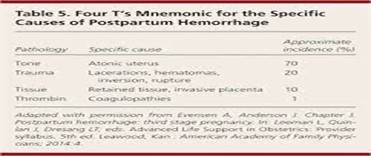Excessive blood loss after childbirth can have several causes; the most common is:
unrepaired lacerations of the vagina or cervix.
retained placental fragments.
vaginal or vulvar hematomas.
failure of the uterine muscle to contract firmly.
The Correct Answer is D
The most common cause of excessive blood loss after childbirth is the failure of the uterine muscle to contract firmly, which is also known as uterine atony. If the uterus does not contract effectively after delivery, it cannot properly close off the blood vessels that were connected to the placenta, leading to heavy bleeding. Uterine atony can occur due to various factors, such as prolonged labor, multiple births, or the use of certain medications during labor.
Other causes of excessive blood loss after childbirth include retained placental fragments, vaginal or vulvar hematomas, or unrepaired lacerations of the vagina or cervix, but these are less common than uterine atony.

Nursing Test Bank
Naxlex Comprehensive Predictor Exams
Related Questions
Correct Answer is A
Explanation
Visual disturbances would require further action by the nurse as they can be a sign of worsening preeclampsia and a potential indication for immediate medical attention. The client's recent weight gain and elevated blood pressure are also concerning findings, but visual disturbances are a more urgent symptom. Frequent voiding in large amounts and 1+ pedal edema are common in pregnancy, while one headache in the past week may or may not be significant depending on the context.
Correct Answer is C
Explanation
Infants of diabetic mothers (IDM) are at risk of hypoglycemia because they have been exposed to high levels of glucose in utero. The fetus responds to this high glucose level by producing high levels of insulin to regulate the glucose level. After delivery, the glucose supply from the mother is cut off and the infant's insulin levels remain high, leading to hypoglycemia.
Additionally, the infant's ability to produce glucose is immature and may not be sufficient to maintain normal blood glucose levels, especially if the infant is premature or small for gestational age. Therefore, IDM requires close monitoring of their blood glucose levels to prevent and treat hypoglycemia.
Whether you are a student looking to ace your exams or a practicing nurse seeking to enhance your expertise , our nursing education contents will empower you with the confidence and competence to make a difference in the lives of patients and become a respected leader in the healthcare field.
Visit Naxlex, invest in your future and unlock endless possibilities with our unparalleled nursing education contents today
Report Wrong Answer on the Current Question
Do you disagree with the answer? If yes, what is your expected answer? Explain.
Kindly be descriptive with the issue you are facing.
